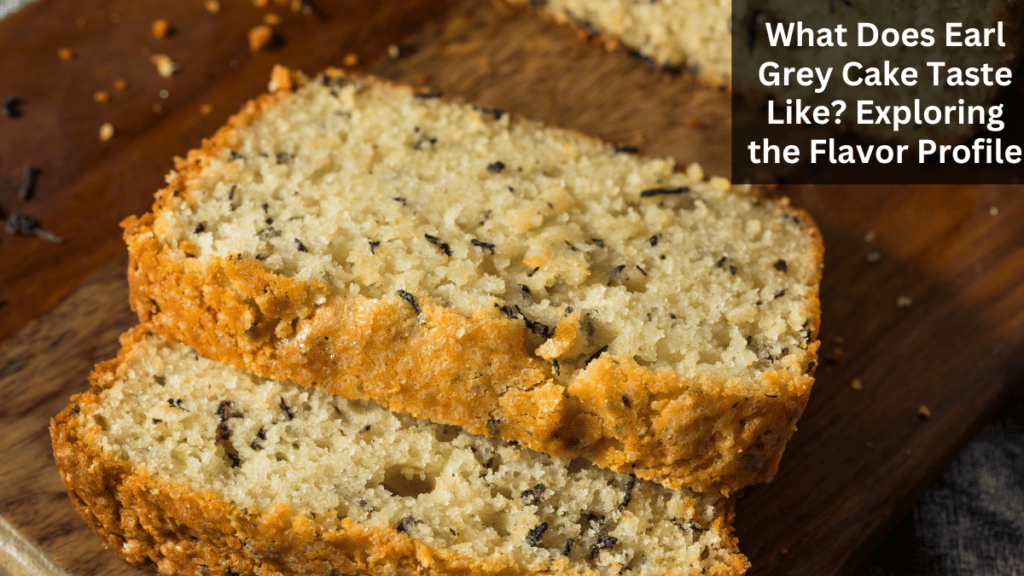Earl Grey cake is a delightful fusion of traditional baking and the sophisticated flavor of Earl Grey tea. This cake is often enjoyed as a unique treat that combines the comforting texture of cake with the aromatic and slightly floral notes of this beloved tea. But what exactly does an Earl Grey cake taste like? Let’s dive into the flavor profile of this exquisite dessert.
The Distinctive Flavor of Earl Grey
Earl Grey tea is renowned for its unique flavor, which is primarily due to the addition of bergamot oil derived from the rind of a bergamot orange. The citrusy essence of bergamot infuses the tea with a slightly tangy and floral note, setting it apart from other black teas.
Subtle Citrus Notes:
Bergamot in Earl Grey tea adds a delicate citrus flavor that is both refreshing and aromatic. This citrusy undertone is one of the defining characteristics of Earl Grey cake, giving it a sophisticated and slightly tangy taste.
Floral Undertones:
In addition to the citrus notes, Earl Grey tea has a subtle floral quality that comes through in the cake. This floral hint complements the sweetness of the cake, creating a well-rounded flavor profile that is both elegant and comforting.
The Taste of Earl Grey Cake
When these unique flavors are incorporated into a cake, they create a dessert that is both flavorful and intriguing. The taste of Earl Grey cake can be described as a blend of the following:
Aromatic and Floral:
The floral notes from the Earl Grey tea are delicately infused into the cake, giving it an inviting and sophisticated fragrant aroma. The floral undertones are subtle but noticeable, providing a unique twist to the traditional cake flavor.
Citrusy Sweetness:
The bergamot oil in Earl Grey tea imparts the cake a gentle, citrusy sweetness. This sweetness is not overpowering but a light, zesty touch that complements the cake’s buttery and rich texture. The balance elevates the cake from a sweet treat to something more refined.
Buttery and Moist Texture:
Earl Grey cake often boasts a moist and tender crumb, thanks to the combination of butter and the delicate infusion of tea. The buttery richness pairs beautifully with the aromatic flavors of the tea, creating a luxurious and satisfying melt-in-your-mouth experience.
How Earl Grey Cake Compares to Other Cakes
Comparison with Vanilla Cake:
While vanilla cake is often considered a classic choice, Earl Grey cake offers a more complex flavor profile. Adding bergamot and floral notes gives it a distinctive edge, making it a more sophisticated alternative to the simplicity of vanilla.
Comparison with Lemon Cake:
Lemon cake is known for its bright, tangy flavor, but Earl Grey provides a more subtle citrus experience. The bergamot in Earl Grey cake offers a milder citrus note than the sharpness of lemon, making it an excellent choice for those who enjoy citrus but prefer a more delicate flavor.
Pairing Earl Grey Cake with Other Flavors
Complementary Frostings:
Earl Grey cake pairs beautifully with a variety of frostings. A classic choice is a light lemon or lavender buttercream, which enhances the citrus and floral notes of the cake. For a more indulgent option, cream cheese frosting adds a rich, tangy contrast that complements the cake’s flavor without overpowering it.
Ideal Beverage Pairings:
To enhance the experience of enjoying an Earl Grey cake, consider pairing it with a cup of tea—Earl Grey tea is a perfect match. Alternatively, a glass of sparkling water with a slice of lemon or a delicate white wine can also beautifully complement the cake’s flavors.
The Appeal of Earl Grey Cake
Earl Grey cake is more than just a dessert; it’s an experience. The sophisticated blend of flavors appeals to those who appreciate the finer things in life. Whether served at a tea party, a brunch, or as a special treat, this cake offers a unique taste that lingers on the palate.
The Influence of Tea Quality on Flavor
The quality of Earl Grey tea in the cake significantly impacts the final flavor. High-quality Earl Grey tea, made with natural bergamot oil and premium black tea leaves, offers a more intense and nuanced flavor. The citrusy and floral notes are more pronounced, providing a richer and more aromatic experience. In contrast, using lower-quality tea may result in a milder flavor, with the cake lacking the distinctive depth that makes Earl Grey cake so unique. Choosing a premium tea ensures that the cake delivers the full spectrum of flavors that Earl Grey is known for.
Textural Elements: Incorporating Tea Leaves
Some variations of Earl Grey cake include finely ground tea leaves or tea-infused milk in the batter, adding texture and flavor. Incorporating tea leaves directly into the cake batter introduces tea specks, which add visual interest and a subtle texture. The tea leaves can provide a slight crunch, contrasting with the soft, moist crumb of the cake. This textural element enhances the overall sensory experience, making each bite more interesting and layered with flavor.
Variations of Earl Grey Cake: Adding Complexity
Bakers often experiment with additional flavors to complement and enhance the natural taste of Earl Grey. Popular variations include adding lavender, which amplifies the floral notes, or incorporating honey, which adds a natural sweetness that harmonizes with the citrusy bergamot. Another variation is the addition of vanilla bean, which introduces a creamy warmth that balances the tea’s astringency. These variations diversify the flavor profile and allow for personalization, making each Earl Grey cake unique while retaining its signature taste.



